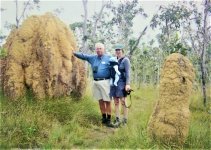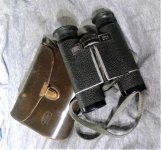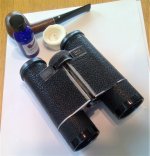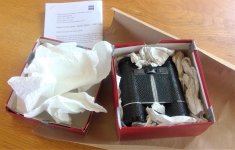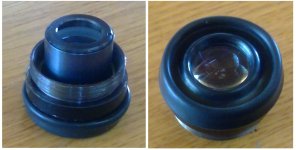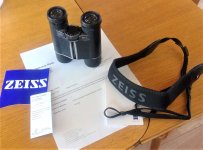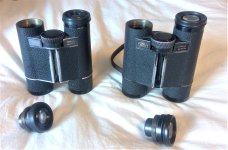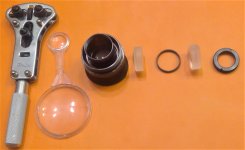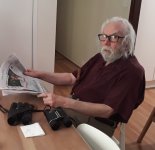Joe H
Well-known member

I enjoy reading the posts in the binoculars section here on Birdforum, but I’m not really an optics aficionado. Nor do I have a lot of optical gear for birding (my working “collection” contains two bins and one spotting scope). I tend to keep my stuff until it breaks or gets stolen so I don’t have much to contribute here but I did recently have a little work done on my old Zeiss spotting scope and the process was so fast, successful and pleasant that I decided to see if Zeiss could work their repair magic on my father-in-law’s old Zeiss Dialyt 8x30B.
The bins have seen about 40 years of hard service, both university field work and recreational bird watching; and then another 20 years of mostly recreational bird watching on a farm after my father-in-law retired and took up hobby farming. He gifted them to me after he bought a new set of Zeiss binoculars several years ago. Below is a picture taken 15 years ago shortly after the great old man retired. We were searching termite mounds for parrot nests in northern Australia. You can see the bins around his neck as he stands next to my wife and son. Unfortunately, as he’s closing in on 90 years, my father-in-law is no longer bashing around the outback in search of rarities. We have a family reunion planned for later this year so I’m hoping to have these cleaned up for use during the visit down under. In my next post I’ll detail their current condition and what I’m hoping to do.
The bins have seen about 40 years of hard service, both university field work and recreational bird watching; and then another 20 years of mostly recreational bird watching on a farm after my father-in-law retired and took up hobby farming. He gifted them to me after he bought a new set of Zeiss binoculars several years ago. Below is a picture taken 15 years ago shortly after the great old man retired. We were searching termite mounds for parrot nests in northern Australia. You can see the bins around his neck as he stands next to my wife and son. Unfortunately, as he’s closing in on 90 years, my father-in-law is no longer bashing around the outback in search of rarities. We have a family reunion planned for later this year so I’m hoping to have these cleaned up for use during the visit down under. In my next post I’ll detail their current condition and what I’m hoping to do.




